Understanding Factoring Receivables
The face value and carrying amount of these receivables stand at $1 million, with the selling price at $0.9 million. After the transaction, Entity A absorbs the first 1.8% of credit losses across the portfolio, with the Factor covering the remainder. Historically, the average credit loss for similar receivables is 2%, with a standard deviation of 0.2%. Let’s look at an example to help understand how accounting for factoring receivables works. In your Chart of Account, create a liabilities account just for factored invoices. With the initial discount on the purchase of your receivables and the fees, you may not be paid any more than 40% of your receivables’ value, but the percentage can vary with each financial firm.
The transaction permits the borrower to have cash today instead of waiting for the payment terms to be settled in the future. Factoring invoices can help you solve cash flow problems quickly, but the cost, time, and energy may not be the best solution for your business. If you do decide to partner with a factoring company, look for one that has a positive reputation in your specific industry and has been in business for many years. Factoring invoices only works when your customers pay their invoices on time and in full.
- In the SME UK market, one may see this with large supermarkets who typically demand 90 or 120 day payment terms.
- He served clients, including presenting directly to C-level executives, in digital, strategy, M&A, and operations projects.
- Since a formal factoring transaction involves the outright purchase of the invoice, the discount rate is typically stated as a percentage of the face value of the invoices.
- If you don’t want your customers alerted when you sell their invoices, look for a company that doesn’t notify them.
Ample Finance does an assessment and determines a fee (also known as a discount rate) of 5 percent. It advances 90 percent of the invoice, retaining 10 percent of the invoice amount. When FastGrowth’s customer pays the invoice, Ample Finance will remit the 10 percent to FastGrowth, less their 5 percent discount rate. With receivables factoring, you are selling individual invoices, https://simple-accounting.org/ so if a customer churns, you need to replace it with an in-kind receivable. However, with receivables financing this is not the case, since individual invoices don’t matter, rather you just need to make the monthly payments. Also, typically receivables factoring is more expensive than receivables financing in terms of both the discount rate and the factoring fees.
Typically for proposed credit facilities of $1 million or more, lenders require a pre-funding audit of the prospective borrower. The discount rate is the fee a factoring company charges to provide the factoring service. Since a formal factoring transaction involves the outright purchase of the invoice, the discount rate is typically stated as a percentage of the face value of the invoices. For instance, a factoring company may charge 5% for an invoice due in 45 days. In contrast, companies that do accounts receivable financing may charge per week or per month. Thus, an invoice financing company that charges 1% per week would result in a discount rate of 6–7% for the same invoice.
Notification Vs. Non-Notification Factoring
It offers non-recourse factoring and cash advance amounts up to 95% of the invoiced amount. Distinguishing between assignment of the responsibility to perform the work and the assignment of funds to the factor is central to the customer or debtor’s processes. Firms have purchased from a supplier for a reason and thus insist on that firm fulfilling the work commitment.
TFG Receivables Financing Guide
The factor is more concerned with the creditworthiness of the invoiced party, Behemoth Co., than the company from which it has purchased the receivables. Although the terms and conditions set by a factor can vary depending on its internal practices, the funds are often released to the seller of the receivables within 24 hours. In return for paying the company cash for its accounts receivables, the factor earns a fee. Businesses that offer longer payment terms to their customers than they receive from their suppliers may be in a perpetual cash crunch. When SMEs routinely attempt to strategically time payments to suppliers so that they coincide with expected payments from customers, it is a good indication that factoring might prove useful. Furthermore, if factoring allows SMEs to take advantage of purchase discounts offered for paying suppliers more promptly, it will offset the cost of factoring.
This often affects additional services offered by the factor in order to best adapt the factoring service to the needs of the business. An example of this includes a recruitment specialist factor offering payroll and back office support with the factoring facility; a wholesale or /distribution factor may not offer this additional service. These differences can affect the cost of the facility, the approach the factor takes when collecting credit, the administration services included in the facility and the maximum size of invoices which can be factored. While factoring fees and terms range widely, many factoring companies will have monthly minimums and require a long-term contract as a measure to guarantee a profitable relationship. This reserve account is typically 10–15% of the seller’s credit line, but not all factoring companies hold reserve accounts. Factoring is typically more expensive than financing since the factoring company takes responsibility for collecting on the invoice.
How Much Money Do You Need to Start a Factoring Company?
You can consider factoring if 1) you operate a business that has commercial or government clients with good credit, and 2) your business is free of liens, other encumbrances, and legal problems. If your customers are unreliable and already paying late, you are unlikely to get approved. Receivables factoring works best for established businesses double entry definition with many partners. From the data, out of an original variability of $1,731, Entity A has transferred $1,636 (95%) and retained $95 (5%). Thus, Entity A determines that it has transferred substantially all of its exposure to the variability in the net cash flow amounts and timings (notably, IFRS 9 doesn’t set a specific percentage threshold).
Also, it may take time and money for them to check the credit on all your customers and to run the collections process. Organizations can pick which receivables or sections of receivables are factored in, and they can investigate their clientele’s creditworthiness before electing to factor in an invoice. Regarding funding, businesses want greater control and agency, which factoring provides. Companies must put up security, incur debt, and make monthly payments on the sum owing despite whether sales are strong or low.
Non-recourse factoring means that the factoring company is out of pocket should the vendor’s buyer not settle its invoice. For instance, a factoring company could charge you 1% of the value of the invoice per month. If your invoice is $10,000, and your customer pays after the first month, you would only owe the factoring company $100. If your customer takes 3 months to pay, you would have to pay the company $300. With accounts receivable financing, on the other hand, business owners retain all those responsibilities. For example, say you were advanced 90% of the value of your original invoice.
Many small businesses struggle financially, but factoring receivables is one of the most popular ways to grow a business and generate cash flow. When you begin factoring your accounts receivable, it becomes even more complex. However, accurate accounting for receivables helps you understand the total cost to your business. A good factoring company is one that’s available to its clients when they need them.
For any business with a net profit margin of 5%, recovering a $1,000 loss due to uncollectible accounts takes an additional $20,000 in sales. It is common for new businesses to experience negative cash flow from operations. New businesses that aren’t yet profitable or businesses with a high debt-to-income ratio pose significant default risk.
How Do I Select a Factor?
This allows the company to get the payment immediately instead of waiting until the due date. In addition, the company can utilize the money for commercial purposes now that it has it. Prior to accepting a position as the Director of Operations Strategy at DJO Global, Manu was a management consultant with McKinsey & Company in Houston. He served clients, including presenting directly to C-level executives, in digital, strategy, M&A, and operations projects. Nikhil Patel is a journalist at Trade Finance Global, covering commodity finance markets, trade technology, and cash / treasury management. The first step is to locate a suitable factor, and perhaps the easiest way to do that is with an internet search.
How is factoring receivables different from accounts receivable financing?
Many small businesses struggle to finance new projects while they wait for their clients to pay previous invoices. Factoring receivables is one of the most popular ways to finance companies struggling with limited cash flow. This involves a larger company buying a business’s unpaid invoices for cash advances and helping it receive any outstanding payments it’s owed, for which the other company charges a fee. Here’s how to know whether factoring receivables is right for your business. The first step in receiving factoring financing is to be pre-qualified by a factoring company or a bank’s factoring department. The proposal will be negotiated between the company and the representative(s) of the lender before being submitted to the loan committee of the lender for approval.
If your clients are expected to pay within 30 days, that’s a pretty quick turnaround. Terms for business lines of credit vary but may last anywhere from 12 weeks to 18 months, while some lines of credit may even be open-ended, renewing annually. Similar to a business line of credit, factoring receivables gives your business access to a credit line, too.
There are plenty of small business financing options for companies needing working capital to maintain cash flow or invest in growth and expansion. Deciding the best option requires due diligence and thorough accounting for all costs. Whether you’re currently factoring invoices or considering a factoring agreement, ensure you understand how to account for factored receivables with accurate journal entries.

